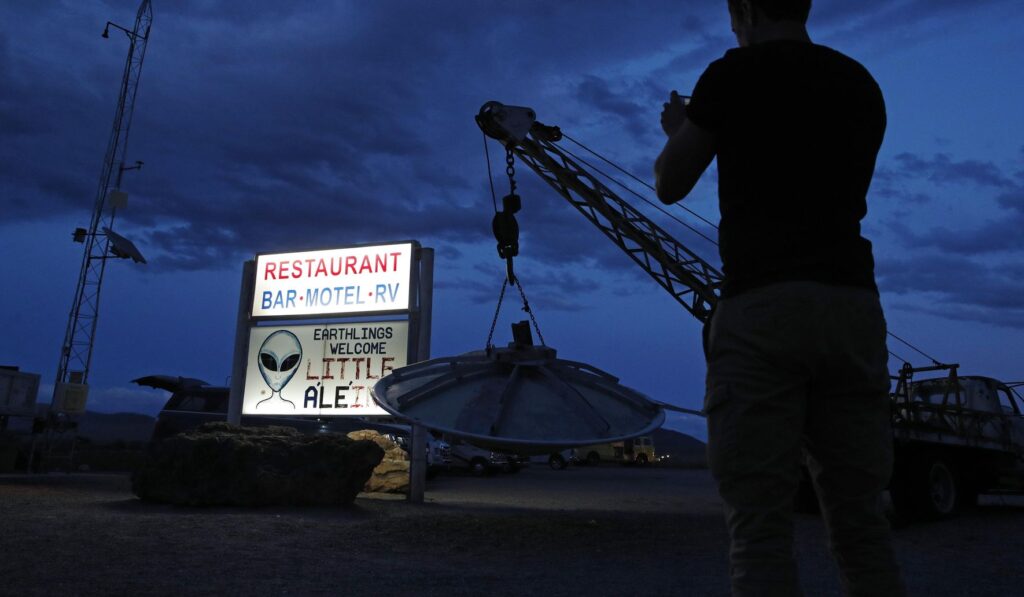An unspecified Air Force aircraft crashed in Nevada last month, and this article looks at what is known about the incident, what officials have confirmed, where uncertainty remains, and why some observers point to Area 51 when discussing possible coverups.
Local reports first flagged a crash after witnesses described an explosion and a plume of smoke over a sparsely populated stretch of Nevada desert. Officials have been tight-lipped about specifics, saying only that a military aircraft was involved and that investigations are underway. That limited official comment has left a lot of space for speculation and competing narratives.
One recurring claim among internet sleuths and some local commentators is that the crash occurred near the famous Groom Lake test site, commonly called Area 51. Those claims often mix eyewitness recollections with maps and old satellite imagery, but so far no public evidence ties the wreck to that specific facility. The Air Force has not publicly placed the crash within Area 51 boundaries, and investigators appear focused on identifying the aircraft and cause before releasing detailed findings.
Skeptics of official accounts point to the long history of secrecy around limited-access military ranges in Nevada and the pace at which classified programs have moved through the area. That history fuels a readiness to believe that facts will be withheld, even if the reason is national security rather than a deliberate coverup. It is also true that the initial information flow in such cases often prioritizes safety and operational security over full transparency.
Investigators typically sift through radar tracks, maintenance records, and witness statements to reconstruct a crash, and those pieces can take weeks or months to assemble. In this case, sources say review of radar and flight data is ongoing, which is standard procedure for any military aviation mishap. Until official findings are released, many of the detail-oriented claims online will remain unverified.
Witness testimony can be helpful but also fragmented, since desert distances and lighting conditions affect what people actually see. Photographs and video that surface on social media often lack metadata or context, complicating efforts to confirm location and timing. Analysts warn against drawing definitive conclusions from isolated clips without corroborating data.
There are practical reasons why some information might not be released immediately, including protecting sensitive equipment, classified missions, or security protocols that apply to certain test sites. That does not automatically mean an intent to deceive; it can be a precaution while safety reviews and recovery operations proceed. Still, the absence of clear public answers will naturally breed suspicion among people already inclined to distrust official explanations.
Local authorities and federal agencies coordinate when incidents occur in restricted zones, and that coordination sometimes creates blurred lines about who speaks for what. Community leaders and residents tend to want quick clarity about hazards like debris, contamination, or restricted access, while federal entities handle national security implications. That tension between local needs and federal secrecy often shapes the public narrative in the days after a crash.
For aviation investigators, determining the cause centers on three areas: mechanical failure, human factors, and environmental conditions. Each possibility carries different timelines for conclusive answers, depending on how much wreckage is recoverable and whether key flight data recorders are available. Without those definitive pieces, speculation can fill the gap, sometimes wildly.
The Nevada crash has reignited conversations about transparency and oversight whenever military operations intersect with civilian life. Residents understandably want to know whether they face lingering hazards and how emergency response worked on the ground. At the same time, analysts note that clear, timely updates from authorities can reduce misinformation and restore some public trust while investigators complete their work.



